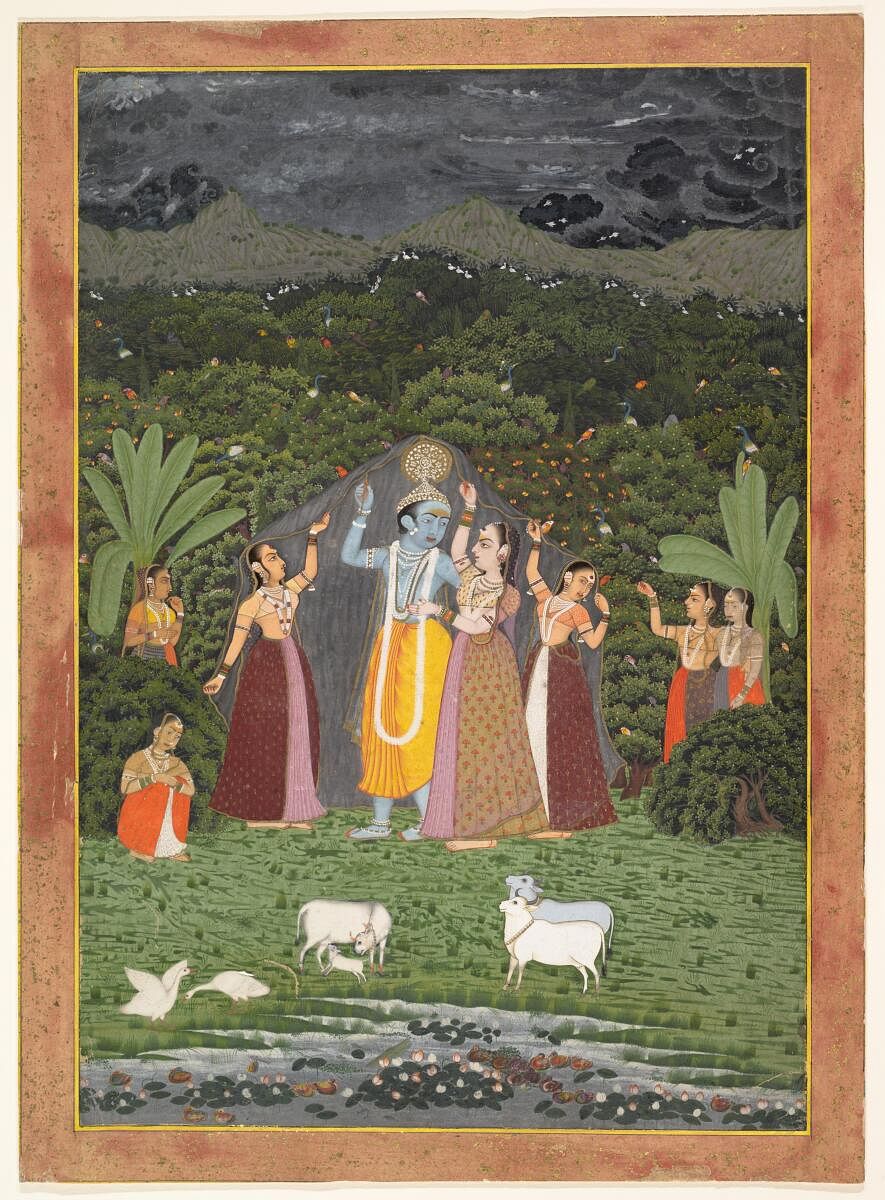
Monsoons in India herald a host of moods, emotions, and idiosyncratic practices — from consuming masala chai and pakodas to dancing Bollywood-style in the rain, to relishing the unique smell of the rains hitting the soil. As an ode to this multi-sensorial season, this article explores three visual, embodied and affective experiences of rain in the socio-cultural history of India.
Megh Malhar, one of the ragas in the centuries-old musical system of India, is believed to have the power to invoke downpours when sung with commitment and passion. It was one of the moods that found expression in literary and visual works, especially ragamala paintings, which imbibe the emotional attributes of the ragas through environmental metaphors and imagery. Rain has typically been used to explore emotions of the anticipation of a lover, devotion, eroticism and consummation. In a ragamala painting from the 18th century, Krishna and his gopis take shelter from the rain in a scene that foregrounds a mood of passion and love emerging in the rainy season.
Bollywood has also represented the anticipation and eroticism of the rain through song-and-dance routines. Most popular among these is the 1955 song Pyar Hua Ikrar Hua, in which Raj Kapoor and Nargis are caught in a storm in an emotionally fraught moment; the 1958 song Ek Ladki Bheegi Bhaagi Si features Kishore Kumar serenading a partially drenched Madhubala; and finally, the infamous song from 1994, Tip Tip Barsa Paani, shows a saree-clad Raveena Tandon dancing in the rain to seduce a stoic Akshay Kumar. The rain-drenched, saree-clad women seductively dancing on camera also reveals the politics of the male gaze in cinema.
In the popular song from 2007, Barso Re Megha, Aishwarya Rai gallivants across an idyllic countryside as she playfully invites, wrestles with and celebrates the monsoon showers. This song stands out among other depictions because she is the sole focus of the camera and is singing for the monsoon rather than for a male lover.
Kannauj, a village in Uttar Pradesh, has been the hub of perfumery since the Mughal period, perhaps even earlier, as archaeologists have unearthed distillation pots dating back thousands of years. Even as this rich history of perfumery makes Kannauj a special place, one of the most fascinating scents produced in the region is the fragrance of the first rains.
In the 1950s and 1960s, Australian mineralogists termed this unique fragrance “petrichor” and identified the compounds and processes that lead to its creation. However, little did they know that they weren’t the first to do so. Kanauj’s signature mitti attar, or perfume of the earth, is extracted from parched clay and distilled with ancient techniques using the deg-bhapka. It is a slow, painstaking process requiring constant monitoring and accurate measurements of temperature and quantity. After the dust and heat of a dry Indian summer, the respite of monsoon has long held sway over the Indian imagination, from classical music and medieval painting traditions to Bollywood routines and perfumery.
Discover Indian Art is a monthly column that delves into fascinating stories on art from across the sub-continent, curated by the editors of the MAP Academy. Find them on Instagram as @map_academy